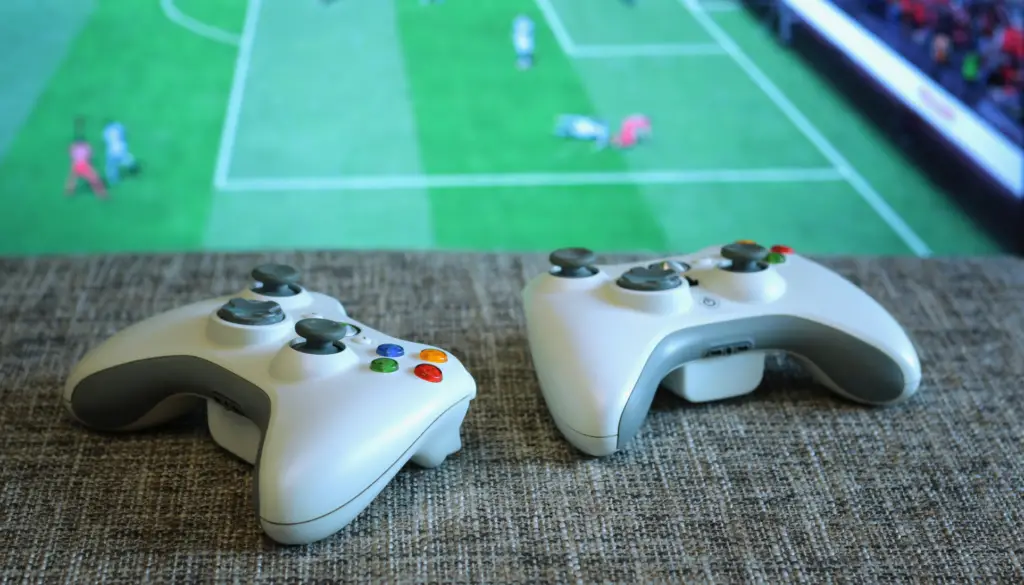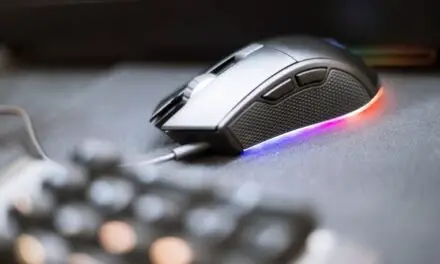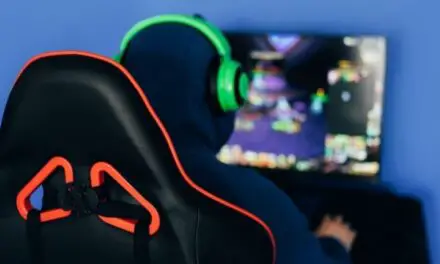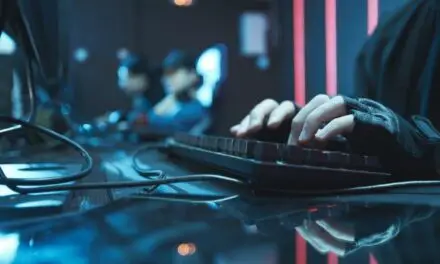The age-old question that lurks in the minds of many gamers and parents who fork out considerable sums for consoles and widescreen TVs: “Can a PlayStation Break a TV?”
As we explore this question and pull back the curtain on what really happens when gaming consoles and TVs cross wires, we’ll find out whether your PlayStation really can harm your TV.
Table of Contents
Can a Playstation Break a TV?

No, a PlayStation is very unlikely to break a modern TV under normal operating conditions. While there are risks like screen burn-in on OLED TVs, overheating or potential issues due to software glitches, these are generally rare and often preventable through proper use and settings adjustments. Both devices are designed to work together seamlessly, and any problems are typically fixable through, rearrangement, software updates or settings changes.
The Anatomy of a TV and PlayStation and How They Interact
Before we jump in deeper, it’s helpful to understand the building blocks of our subjects in question—the TV and the PlayStation. Consider this bit the “Tech 101” you never knew you needed, a primer that peels back the layers on these complex devices and how they interact.
By knowing what makes them tick, we’ll be better equipped to answer the looming question: Can a PlayStation actually break a TV? Let’s get into this.
Understanding Basic TV Components
First, let’s look a little closer at what makes your TV tick—your gateway to cinematic experiences. But what’s going on behind that screen?
At its core, a TV is made up of a display panel, either LED, OLED, or QLED, which takes care of visuals. Then there’s the motherboard, a processor that processes your inputs, whether it’s from a remote or, you guessed it, a gaming console.
Add in power supply circuits, speakers for audio, and various ports for connectivity, and you’ve got yourself a TV.
It’s not just a ‘dumb’ screen; it’s a complex piece of machinery, finely tuned to deliver quality entertainment.
Inside a PlayStation
Now, let’s switch gears and talk PlayStation. If you’ve ever wondered what makes your gaming sessions so fluid, look no further than the CPU and GPU combo in this device. These work in tandem to render graphics and manage real-time simulations. Don’t overlook the RAM, the unsung hero that allows you to play next-generation titles while keeping your game data readily accessible.
Of course, there’s also the hard drive for storing all those expansive game worlds, and a cooling system to keep everything from overheating. It’s like a miniaturized command center, all geared towards maximizing your gameplay experience.
How Your TV and PlayStation Communicate
So how do these two pieces of tech communicate? Usually, through HDMI cables that transmit both video and audio signals. Once connected, your TV becomes an extension of the PlayStation, displaying every leap, headshot, and cutscene.
But it’s not just a one-way street. Modern smart TVs offer HDMI-CEC (Consumer Electronics Control), allowing your TV remote to control some PlayStation functions, and vice versa.
Common Myths and Misconceptions About How PlayStation’s Can Break TVs
There are plenty of old wives’ tales and misconceptions surrounding the relationship between PlayStations and TVs that we want to get to the bottom of first.
Overuse Will Burn The TV Screen
First up is the age-old myth that using your PlayStation for an extended period will lead to screen burn-in, rendering your TV a shadowy mess.
Screen burn-in is a form of permanent display damage, but modern LED and OLED screens have preventive measures in place, making this more fiction than fact.
Your TV is not going to become a shadowy mess.
I have been gaming regularly on an OLED for the past 2 years and have never experienced image retention.
However, leaving static images on screen for extended periods can cause temporary image retention which could potentially lead to burn-in. It’s not too difficult to watch for, just keep an eye out for static images remaining on the screen and be sure not to pause your game for long periods. A warning rather than a death sentence for your TV.
The PlayStation Can Fry the TV’s Circuits
The electrifying claim that a PlayStation can overload a TV’s circuits has had many a mother worried to death while a PlayStation was plugged into the sitting room TV.
A dramatic notion, but largely unfounded. Most modern TVs and PlayStations come equipped with surge protection and fail-safes to prevent electrical mishaps. So unless you’re plugging into an unstable power source, the chance of your PlayStation ‘frying’ your TV is minimal.
Gaming mode ruins TVs
Some folks swear that using your TV’s “Gaming Mode” will deteriorate the display over time. While it’s true that Gaming Mode changes the settings to prioritize input responsiveness over image quality, it won’t harm a hair on your TV’s head. Manufacturers design it to maximize your gaming experience, not to compromise your TV’s lifespan.
In What Ways Can a PlayStation Negatively Impact a TV?
A PlayStation won’t exactly breathe life into your TV and there are circumstances where the console can have a negative impact on your TV, so—what’s the worst a PlayStation can do to a TV?
Screen Burn-In and Image Retention
First up is screen burn-in and image retention which we’ve briefly touched on. This is a condition where prolonged exposure to static images leaves a permanent or temporary “ghost” on the screen.
Now, while modern TVs have built-in technology to minimize this risk, older plasma screens or OLED TVs are susceptible.
How can a PlayStation contribute to this?
In-game HUDs (Heads-Up Displays) or paused game screens left on for hours can cause these static images to remain.
Overheating Issues
Though uncommon, overheating can become an issue if your PlayStation and TV are in too close proximity, especially in confined spaces without adequate ventilation.
The PlayStation generates heat during usage, and if it’s too close to the TV, that heat can impact the TV’s own cooling mechanisms. This could lead to the TV’s internal components getting hotter than intended, affecting performance and, in extreme cases, potentially causing long-term damage.
Moral of the story? Give your PlayStation and TV the space they deserve to breathe and operate efficiently.
Power Surges and Electrical Failures
Another potential hazard comes from power surges. Though not directly caused by the PlayStation itself, if both the TV and console are connected to an unstable power source, a power surge could result in short circuits.
Many believe surge protectors are foolproof, but a serious electrical event, like a lightning strike, could bypass these safeguards, damaging both your TV and console.
Related Article: Can a PlayStation Get a Virus? (What You Need to Know)
Software Glitches
In the modern day of Smart TVs and internet-connected consoles, software plays an essential role. A software glitch from either side could cause malfunctioning.
Imagine a firmware update for your PlayStation that isn’t compatible with your TV’s current version. The worst-case scenario? Your TV is stuck in an eternal loop, unable to interface correctly with your PlayStation until one or both receive patches to fix the software mismatch.
Incompatibility Chaos
Speaking of compatibility, using outdated cables or ports can potentially cause issues. It may not physically damage your TV, but it can result in loss of audio, grainy visuals, or complete loss of signal. Sure, it might not sound like “damage,” but the frustration level could lead you to do the damage.
The RGB Range Mismatch
This is a lesser-known, but equally troublesome issue—RGB range mismatch. TVs and PlayStations operate on different RGB scales. The PlayStation might be set to ‘Full RGB,’ while the TV is on ‘Limited RGB.’ This discrepancy won’t physically damage the TV but will cause ungodly picture quality issues. Blacks may appear grey, and the overall picture will seem completely washed out.
User Errors
Lastly, user errors. Incorrectly setting the video output resolution or manually tweaking picture settings can lead to image quality issues, which, while not permanent, could cause temporary screen artifacts or disrupt the visual experience.
Tips to Keep Both Your PlayStation and TV Working Well
When it comes to keeping your PlayStation and TV ticking along nicely together, prevention, as they say, is better than cure.
Use the Right Cables
Never underestimate the power of a quality HDMI cable. Ensure it meets the latest standards, typically HDMI 2.1 for next-gen PlayStations and modern TVs. Quality cables minimize the risk of signal loss and potential electrical issues, making for a smoother, safer connection.
Ensure Proper Ventilation
Your PlayStation is like an athlete; it needs good ventilation. Poor ventilation can lead to overheating, which can subsequently affect performance and potentially impact your TV. Make sure your console is positioned in an open area, on a hard, flat surface, with enough room for heat dispersion.
Use the Right Screen Settings
Whether it’s calibrating your TV or adjusting your PlayStation’s display settings, finding the right balance is key. Utilize “Game Mode” on your TV for lower latency and better refresh rates, but also keep an eye on brightness and contrast to avoid any risk of screen burn-in.
Install Firmware Updates
Last but certainly not least, always keep your devices up to date. Firmware updates often fix compatibility issues, enhance performance, and offer security patches. Regularly check for updates on both your PlayStation and TV to ensure that they’re operating at their best.
Over the years, a sort of digital symbiosis has evolved between PlayStations and TVs, one that manufacturers on both sides have been keen to cultivate.
It’s evident that the ecosystem has been carefully designed to ensure that PlayStations and TVs not only coexist but bring out the best in each other for an enhanced user experience.
A little common sense when putting your gaming setup together will go a long way towards your PlayStation and TV living long and happy lives together.



